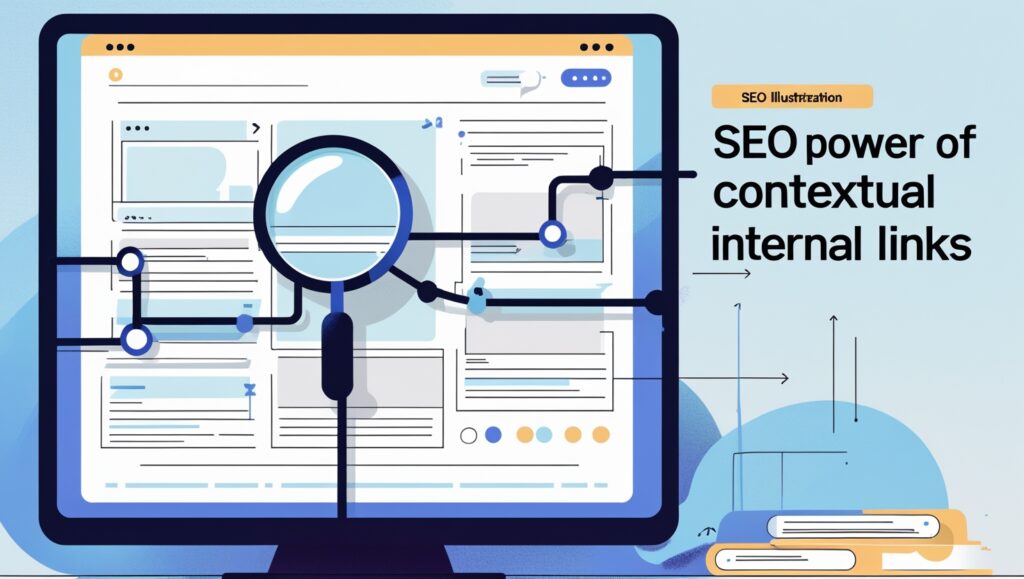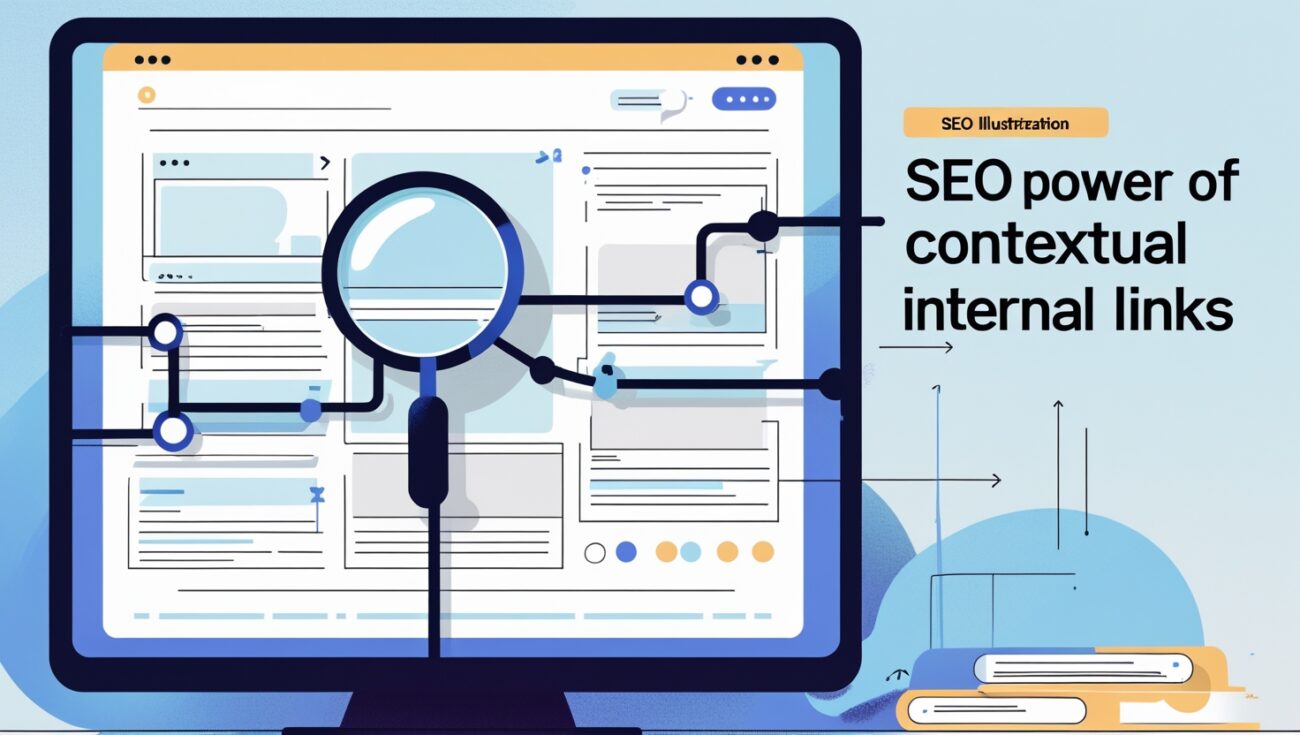The SEO Power of Contextual Internal Links Explained
When I first started doing SEO, I thought that an internal link was just an internal link. I would add them in my sidebars or at the bottom of a page, thinking that as long as the link was there, I was doing a good job. I was wrong. I was baffled when my competitors, who had fewer links, would consistently outrank me. It wasn’t until I realized that the real SEO power isn’t just in the link itself, but in the words and paragraphs that surround it—the context.

Table of Contents
A contextual internal link is a game-changer. It’s the difference between a simple, navigational link and a powerful, SEO-boosting signal. This guide will explain why contextual internal links are so powerful and give you the actionable steps to start using them to improve your rankings and authority today.
What Exactly is a Contextual Internal Link?
A contextual internal link is a link that is embedded naturally within the body of an article or blog post. It’s part of the narrative and makes sense to a human reading the text.
- The Definition: Imagine you are writing an article about keyword research. In a paragraph, you might write, “Once you have your keywords, you can begin to write your content and build a strong internal linking strategy.” The link would be on the bolded phrase, and it would point to a separate article on internal linking. The context makes the link relevant and helpful.
- The Opposite: A non-contextual link is a list of “Related Articles” at the bottom of a page, or a link in a sidebar. While these have their place, they do not provide the same powerful contextual signal that an in-body link does.
The Two Core Powers of Contextual Links
- Power #1: For Search Engines: This is the most important part. The words surrounding an internal link give Google a huge clue about the destination page. For example, if you have a link on the words “how to find high-paying keywords,” Google will get a strong signal that the linked page is a highly relevant resource on that topic. This helps the destination page rank for those specific, high-value keywords.
- Power #2: For Users: A contextual link provides a better user experience. It’s a natural part of the conversation, not a distraction. It guides the user to a relevant, helpful piece of content at the exact moment they need it. This keeps them on your website longer and reduces your bounce rate, which are both positive signals to Google.
Your Action Plan for Contextual Linking
- Step 1: Focus on Thematic Relevance: Before you even think about adding a link, find articles that are thematically relevant to each other. You need to create a logical path for both the user and Google.
- Step 2: Use Strategic Anchor Text: The words you use for your anchor text are crucial. Use descriptive, keyword-rich phrases that are a direct match for the destination page.
- Step 3: The “Deep Dive” Opportunity: Find articles where you mention a complex topic or a tool that you could expand on. This is a perfect opportunity for a contextual link. For example, if you mention link equity, you can add a link to an article that does a deep dive into what it is and why it’s so important. A tool can help you find all of these deep-dive opportunities.
The Tool That Makes Contextual Linking Simple
I know that finding all of these opportunities manually is a monumental, time-consuming task. You would have to re-read your entire website, sentence by sentence, looking for opportunities. That’s why internal linking automation is the key. A good tool can scan your site and find the perfect, contextual opportunities for you. Ready to start building a powerful, contextual internal linking strategy that boosts your rankings? Discover how Linkbot can help you.
Conclusion: Link with a Purpose
Not all links are created equal. By mastering the art of contextual internal linking, you can stop dropping random links on your website and start building a powerful, strategic network that boosts your rankings and establishes your authority as an expert in your niche.
My journey taught me that a major mistake is seeing SEO as a mystery. By implementing a smart, contextual approach to my website, I made the mental shift from being a spectator to an active participant in my website’s success. This simple realization took the overwhelm out of SEO and turned it into a series of logical, manageable steps that I could control.
The long-term, compounding effect of this strategic approach is what makes it so powerful. Each time you add a thoughtful, relevant link, you are not just performing a task; you are building your website’s authority, one link at a time. These small, consistent improvements add up to a significant competitive advantage over the long term, making your website an increasingly powerful asset.
I can say from personal experience that there is a special kind of satisfaction that comes from seeing a direct correlation between a new link and a ranking boost. It’s the feeling of taking a tangled mess and organizing it into a clean, logical network. The result is a website that just feels better to navigate, for both users and the people managing it.
A clean internal link profile also has a huge impact on your website’s overall trustworthiness and authority. When a user or a search engine bot lands on your page and sees a clear network of interconnected, relevant articles, it signals that you are a serious, comprehensive resource on the topic. This kind of professional organization is exactly what Google looks for.
The most important part of this foundational skill is building a consistent habit of linking. It’s not about a single audit and then forgetting about it. A good website is a living thing, and it needs regular maintenance to ensure your internal links stay clean, which is a key part of long-term SEO success.
I felt like I was finally in the driver’s seat of my SEO. For years, I had relied on external factors, which felt like I was giving up control of my SEO destiny. But by mastering a simple task like building my internal links, I was proactively building my site’s authority from the inside out, on my own terms, which was an empowering and exciting feeling.
By implementing a strategy that serves both SEO and conversions, you are also directly addressing Google’s E-E-A-T framework. You are demonstrating expertise by creating topical clusters, you are showing authority by linking from strong pages, and you are providing a better user experience, which is a key part of what Google looks for in a trustworthy website.
I’ll never forget the first time I applied my new internal link strategy to a page that was struggling to rank, and it shot up in the search results almost overnight. This was my “aha” moment. I realized that a strategic, well-placed link from a high-authority page was far more powerful than I ever thought possible.
One of the greatest benefits I got from using an automated tool to manage my link profile was the “to-do” list it provided. Instead of being overwhelmed by the sheer size of my website, the tool gave me a prioritized, actionable list of fixes to make. It transformed a monumental, frustrating task into a series of manageable steps that I could tackle in just minutes.
It’s crucial to understand the difference between a simple, generic link and one that’s part of a strategic, mapped plan. A simple link is a one-off connection. A link that’s part of a plan is a purposeful part of a larger network, designed to pass authority and guide a user. The latter is far more powerful.
Ultimately, mastering internal linking is a simple but powerful strategy that transforms a website’s foundation. It’s a low-cost, high-impact fix that can instantly improve your site’s health and SEO performance. It’s the kind of foundational SEO work that every website owner should prioritize.
My final piece of advice is to not be intimidated. Don’t worry about the high cost of manual labor; just focus on making your website a better place for your readers. You will be amazed at the progress you make and the results you can achieve.

